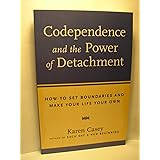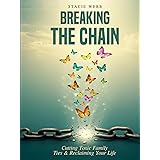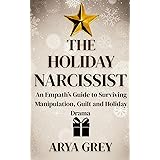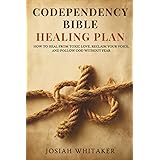The insidious grip of gambling addiction can feel inescapable, leading individuals down a path of financial ruin and emotional distress. As powerfully illustrated in the accompanying video, the journey through this struggle can be incredibly isolating, marked by moments of profound despair. However, the raw honesty shared also illuminates a crucial truth: recovery is not only possible but is a tangible reality for those who choose to reclaim their lives.
The story of “The Watch King” serves as a poignant reminder of how deeply problem gambling can affect someone. His account of driving daily to Atlantic City, losing everything, and then facing the humiliation of being unable to pay a mere $5 parking fee, resonates with the desperation many experience. This article aims to delve deeper into the complexities of gambling addiction, explore its signs, and discuss the pathways available for effective gambling recovery, building upon the heartfelt narrative you’ve just witnessed.
Understanding the Grip of Gambling Addiction
For many, the allure of gambling begins innocently, perhaps as a recreational activity. However, for a significant number of individuals, this pastime can quickly spiral into a compulsive habit. The man in the video describes driving to Atlantic City every day, highlighting the relentless pull that dictates daily life when addiction takes hold. Imagine if every waking moment was consumed by thoughts of the next game, the next bet, the next chance to win back what was lost; this is the reality for those struggling with compulsive gambling.
This persistent urge often transcends financial logic or personal consequences. It is a psychological compulsion that can override rational decision-making, leading to increasingly risky behaviors. The need to chase losses, often a core component of gambling addiction, perpetuates a devastating cycle. Financial stability is frequently eroded, leading to overwhelming debt and strained relationships, as was experienced in the video when every cent was lost.
The Slippery Slope of Compulsive Gambling
Compulsive gambling is officially recognized as a mental health disorder, often characterized by an uncontrollable urge to gamble despite harmful negative consequences. The path to this point is often a gradual one, where initial wins or perceived ‘near misses’ reinforce the behavior. A sense of control may be imagined, yet it is an illusion that further entrenches the addiction. It is commonly observed that individuals may start with small bets, which then escalate in frequency and size, creating a deeper dependence.
The progression of this addiction is stealthy, often hidden from loved ones due to shame or denial. Promises to stop are made, as heard in the video, but the internal battle proves too strong. The individual becomes trapped in a cycle where the act of gambling offers a temporary escape from stress or negative emotions, only to plunge them deeper into those very feelings afterwards. This pattern makes breaking free incredibly challenging without significant intervention and support.
Financial Ruin and Emotional Toll
The financial ramifications of gambling addiction are often devastating. The anecdote in the video about needing 30 cents for parking after losing everything powerfully illustrates this reality. Imagine being so utterly devoid of funds that you are forced to beg strangers for spare change just to retrieve your car; this level of desperation is a stark indicator of how far one can fall. This was not merely an inconvenience; it was a profound moment of humiliation and rock bottom, deeply impacting one’s sense of self-worth.
Beyond the immediate financial losses, the emotional toll is immense. Feelings of guilt, shame, anxiety, and depression are common companions to problem gambling. The man’s confession of crying all the way home after that incident reveals the deep emotional pain inflicted by the addiction. These emotions can create a vicious cycle, where gambling is used as a coping mechanism for the very distress it causes, making the struggle even harder to overcome. Relationships are often damaged, and trust is eroded, leaving individuals isolated and vulnerable.
The Catalyst for Change: A Daughter’s Birth
While the grip of gambling addiction can feel unbreakable, a turning point often arrives when something profoundly significant enters an individual’s life. For “The Watch King,” this moment was the birth of his daughter. This pivotal life event provided a stark realization of the future implications of his addiction. Seeing his newborn daughter in the hospital, he was confronted with the terrifying prospect that his path could lead to death or incarceration, leaving his child without a father.
This is a powerful example of how external factors, especially the responsibility for another life, can serve as a catalyst for change. The thought of his daughter growing up with a father consumed by addiction was clearly an unbearable thought. Such fears are often enough to jolt an individual into considering a future free from the chains of their habit. It demonstrates that beneath the compulsion, there lies a core desire for a better life, a life worthy of their loved ones.
Recognizing the Breaking Point
A breaking point is often not a single event but a cumulative realization that the consequences of addiction have become too severe to ignore. For some, it might be the loss of a job, the dissolution of a marriage, or a significant financial crisis. For others, it is an internal awakening, a deep-seated desire to regain control and rebuild their lives. The crucial aspect is the recognition that life cannot continue as it has been.
These moments of clarity, while often painful, are essential for initiating the gambling recovery process. They represent a window of opportunity where the individual’s motivation to change is at its peak. Recognizing this point, either in oneself or in a loved one, is the first critical step toward seeking help and embarking on a journey towards healing and restoration.
Taking Life Into One’s Own Hands: The Path to Gambling Recovery
The decision to “take my life into my hands today” signifies a powerful shift from passive acceptance to active engagement in one’s recovery. This is not a passive process; it demands immense courage, commitment, and sustained effort. It involves acknowledging the problem, accepting responsibility for one’s actions, and making a conscious choice to seek a healthier path. This decision is often reinforced by the desire to protect and cherish loved ones, as seen with the man’s dedication to his daughter.
This initial resolve, while strong, must be followed by concrete actions. It means stepping away from environments that trigger gambling, seeking professional help, and building a robust support system. The journey of gambling recovery is unique for everyone, but it always begins with that fundamental, empowering decision to change. This personal declaration of independence from addiction is the foundation upon which all subsequent progress is built.
Navigating the Journey of Gambling Recovery
The path to gambling recovery is multifaceted and requires a comprehensive approach tailored to individual needs. It involves addressing the underlying psychological factors that contribute to the addiction, developing coping mechanisms, and rebuilding various aspects of life that may have been damaged. Recovery is a continuous process, not a one-time event, and sustained effort is typically required.
It is understood that overcoming such a powerful compulsion cannot usually be done alone. Professional guidance, peer support, and a structured plan are integral components of successful recovery. The goal is not just to stop gambling but to foster a fulfilling life where gambling holds no sway, where healthy choices are made consistently. This involves learning new ways to manage stress, boredom, and other triggers that previously led to gambling behavior.
Seeking Support and Building New Habits
One of the most vital steps in gambling recovery is reaching out for help. This can involve therapy, support groups like Gamblers Anonymous, or counseling specifically designed for problem gambling. These resources provide a safe space to share experiences, gain insights, and learn from others who have walked a similar path. Professional therapists can help identify triggers, address co-occurring mental health issues, and develop personalized strategies for relapse prevention.
Equally important is the process of building new, healthy habits and interests to replace the void left by gambling. Engaging in hobbies, spending time with family, pursuing educational goals, or taking up exercise can all contribute to a more balanced and rewarding life. New interests can provide a sense of purpose and joy that was once sought in the thrill of gambling. This reframing of daily life is essential for long-term well-being and sustained abstinence.
Long-Term Strategies for Overcoming Addiction
Sustaining gambling recovery requires ongoing vigilance and the implementation of long-term strategies. Financial management is often a critical area, involving careful budgeting, debt repayment plans, and sometimes even having trusted individuals manage finances initially. Self-exclusion programs, where an individual voluntarily bans themselves from gambling establishments or online platforms, can be a powerful tool to prevent relapse.
Additionally, maintaining connection with support networks, continuing therapy as needed, and regularly reflecting on one’s progress are all vital components. The journey may have its challenges, including potential setbacks, but each step forward reinforces the commitment to a life free from the constraints of gambling addiction. The man’s story offers hope that, with determination and support, a brighter, more secure future can certainly be achieved for anyone facing this struggle.











